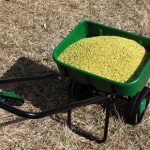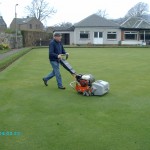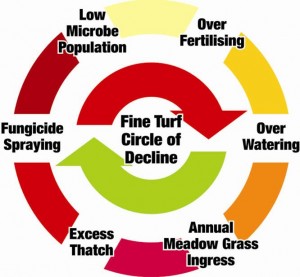Pre season bowling green fertilising is a key component of the Performance Bowling Green program.
Spring and autumn are the ideal times to make nutritional corrections using granular fertilisers.
During the playing season I recommend that you rely on bio liquid fertilisers applied on a spoon fed basis approximately every 14 days. There is a large range of suitable products available from a variety of manufacturers.
The bio liquid approach to fertilising the green delivers a more consistent growth pattern and the “bio” or carbohydrate component encourages natural decomposition of thatch and release of soil borne nutrients to the plants as and when they need them.
However, the rigours of winter can leave imbalances in the soil due to luxury uptake by the plants of Potassium and the natural leaching processes inherent in the soil.
Due to this it is a good idea to top up the soil with a corrective application of granular fertiliser at this time.
The soil temperature will still be fairly low so the product you use should contain a little quickly available nitrogen (ammonia), as well as a slow release N component. Plants also need a little Phosphorous at this time to aid strong root development, especially if you over-seeded the green in autumn.
More articles on nutrition here.



